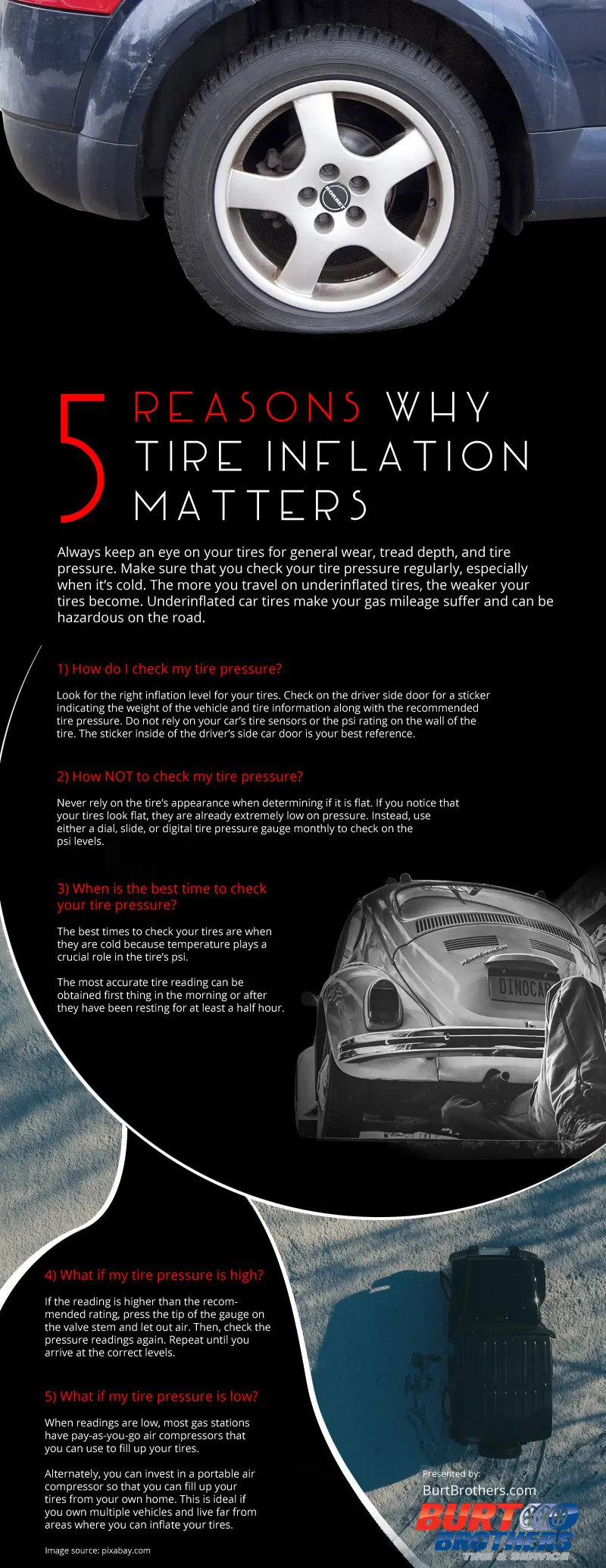
With the correct tire pressure is a must for everyone’s driving safety. And the incorrect pressure usually affects the car’s braking, when handling, fuel economy, the comfortability while driving and the life of your tires. The tire pressure, on the other hand, is measured in pounds per square inch, that’s why each and most manufacturers always recommend having the best psi for cars.
Also, you must keep an eye on your tires, especially when you are on the long road. Make sure to check it regularly, because of the more you travel in on underinflated tires – the weaker the tires become.
Take note, the underinflated car tires can make your gas mileage suffer and possible hazards on the road may happen.
Let’s find out the reasons why tire inflation matters.
1. How will you Check the tire pressure?
Always look for the right inflation level of your tires. Better check the driver side door for a sticker which indicates the weight of the car and the tire information. Keep the tire information together with the recommended tire pressure.
Remember; do not rely on your car’s tire sensors or the PSI rating found on the wall of the tire. Check the sticker inside as well of the driver’s side car door for your reference.
2. How not to check the tire pressure?
When it comes to safety, never just rely on the tire’s appearance to distinguish if it is flat. If you have noticed that the tires appear flat, they might be low on pressure. Rather, you must use a dial, slide or digital tire pressure gauge every month to ensure on the psi levels.
3. When is the best time to check the tire pressure?
When checking tire pressure, it is best to check it when it is cold because the temperature plays a major role in the tire’s psi. And the accurate result can be obtained usually first thing in the morning or even after they have been resting for at least half an hour.
4. What if the tire pressure is high?
When the reading is higher than the suggested rating, then press the tip of the gauge on the valve stem and let out air. The tire pressure that is too high will result in less tire touching the ground. This means, it creates a not quite good ride and compromised traction may result to stop quickly.
If the tire overinflated by nearly 6 psi can be damaged easily and when the tires run over debris or the potholes. The overinflated tires that lead to inordinate inner tire tread wear may result in the decreasing of the overall life of tires.
5. What if the tire pressure is low?
When readings are low, many gas stations have pay-as-you-go air compressors wherein you may use to fill up the tires.
When it is too low, too much of the tire is touching the road. The underinflated tires wear hastily and are prone to overheat. The underinflation of 6 psi could be seemed insignificant – represents about 20% of the tires suggested pressure. Such a result, may lead to tire failure and reduce the tread life approximately 25%.
The underinflation is actually bringing about a tire to bend as it moves that may lead to building excessive heat.
On the other hand, you can either invest in portable air compressors, that way you can fill up the tires from your own home. This is, in fact, ideal if you own multiple cars and live far from places where you can inflate the tires.
source: https://burtbrothers.com/blog/the-importance-of-properly-inflated-tires/
Comments
Download this infographic.

